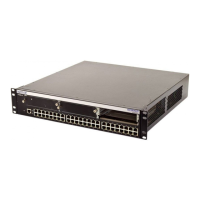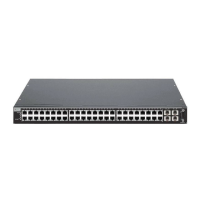set radius ipsec
32-10 Authentication and Authorization Configuration
This example shows how to force any management-access to the switch (Telnet, web, SSH) to
authenticate through a RADIUS server. The all parameter at the end of the command means that
any of the defined RADIUS servers can be used for this Authentication.
C3(rw)->set radius realm management-access all
set radius ipsec
Use this command to enable or disable IPsec on one or all RADIUS servers.
Syntax
set radius ipsec {enable | disable} [index]
Parameters
Defaults
If no RADIUS server is specified by an index, all RADIUS servers configured for this switch are
enabled or disabled for IPsec.
Mode
Switch command, read-write, if security profile = normal.
Switch command, super-user, if security profile = c2
Usage
IPsec is disabled by default for RADIUS transactions. Refer to Chapter 33, Configuring IPsec, for
information about configuring IPsec globally.
The "clear radius ipsec" command, given without options will disable RADIUS IPsec on all
servers.
Example
This example enables IPsec for the RADIUS server with index number 2. Then, the server’s
configuration is displayed with the show radius server command.
C3(rw)->set radius ipsec enable 2
C3(rw)->show radius server 2
RADIUS Server IP Address Auth-Port Realm-Type IPsec
-------------- ---------- --------- ----------------- --------
2 192.168.10.10 1812 any enabled
clear radius
Use this command to clear RADIUS server settings.
Syntax
clear radius {[retries] | [timeout] | [server {index | all | realm {index | all}}]}
enable | disable Enables or disables IPsec for one or all RADIUS servers.
index (Optional) Specifies a RADIUS server for which to enable or disable
IPsec.

